As the 1960s progressed, long-established firms, that both designed and manufactured jewelry, recognized the success of the new aesthetic spearheaded by individual artist-jewelers. Given the high value of the materials involved and an entrenched conservative clientele, they understandably lagged behind the trends. But certainly, by the late 1960s, well-known jewelry houses such as Cartier, Bulgari, and Van Cleef & Arpels began to create pieces that utilized this more contemporary look. They employed younger jewelers to update more traditional lines, engaging them to design individual pieces and sometimes entire collections. Their aim was to attract a youthful clientele. The French firms Chaumet and Van Cleef & Arpels, for instance, launched boutiques that were trendier in design and ambiance. These spaces were meant to entice younger, hipper customers, while continuing to offer their customary lines to more conservative clients in their established locations. Greeted by contemporary music, clientele who entered the boutiques were often assisted by female associates—an unheard-of circumstance in the jewelry trade at the time.
While some individual jewelers and well-known firms continued to create highly textured jewelry, there was an aesthetic turn. The chunky, tactile style was slowly supplanted by a sleeker, polished line with a prevalence of geometric and abstract shapes. Encouraged by the spirit of the times to overturn the past, artist-jewelers and jewelry houses alike diversified their approach. While individuals created one-of-a-kind pieces, jewelry firms generally cast multiples but in a very limited format.


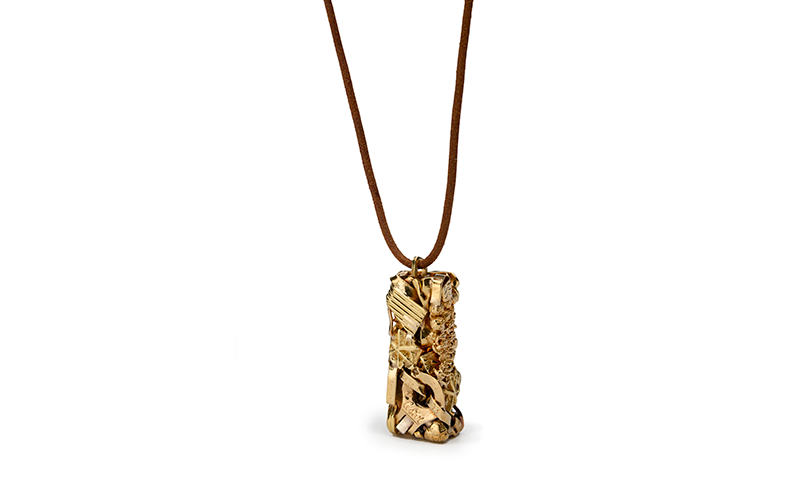 Compression Pendant by César Baldaccini
Compression Pendant by César Baldaccini
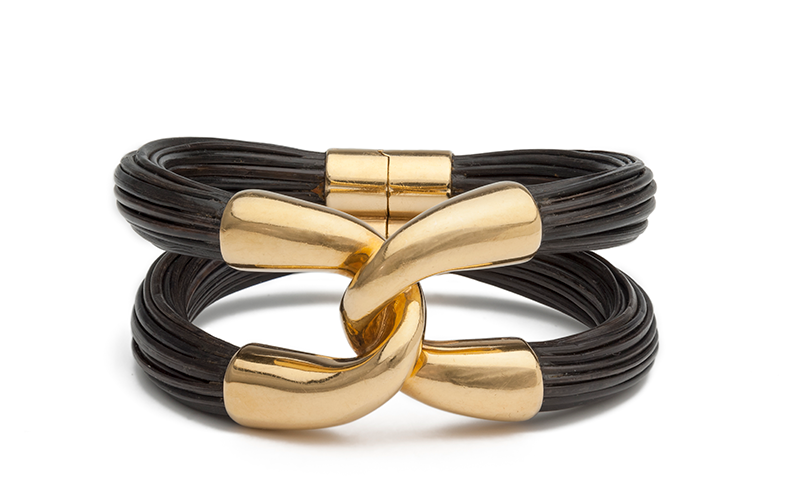 Bracelet by Boucheron
Bracelet by Boucheron
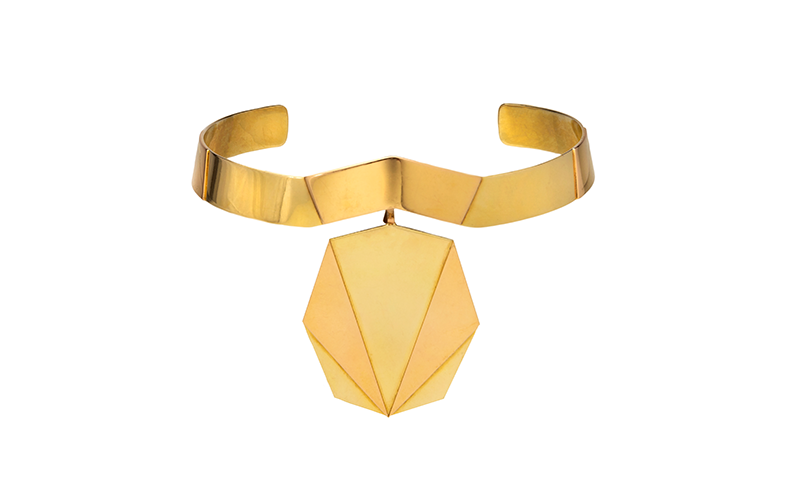 Choker with Pendant by Bulgari
Choker with Pendant by Bulgari
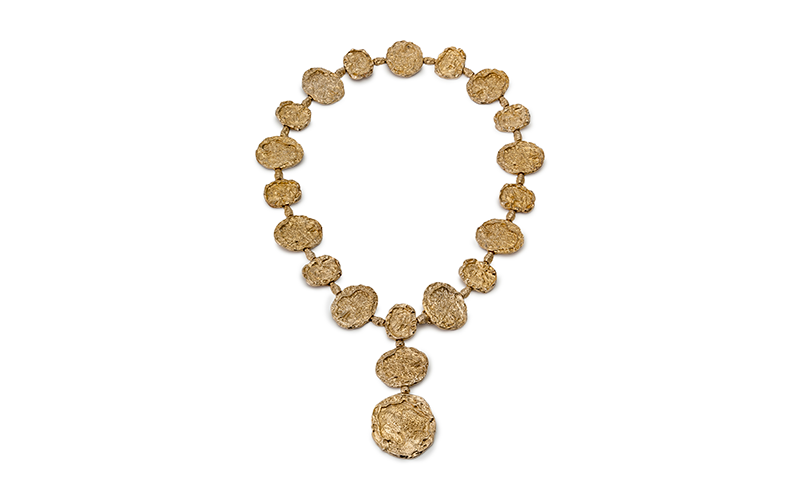 Belt/Necklace by Cartier
Belt/Necklace by Cartier
 Bird Brooch by Pierre Sterlé
Bird Brooch by Pierre Sterlé
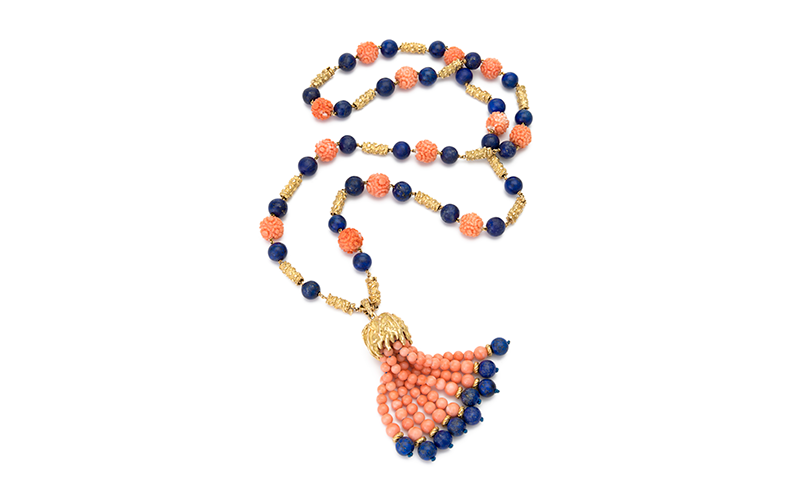 Necklace by Chaumet
Necklace by Chaumet
 Necklace by René Morin
Necklace by René Morin
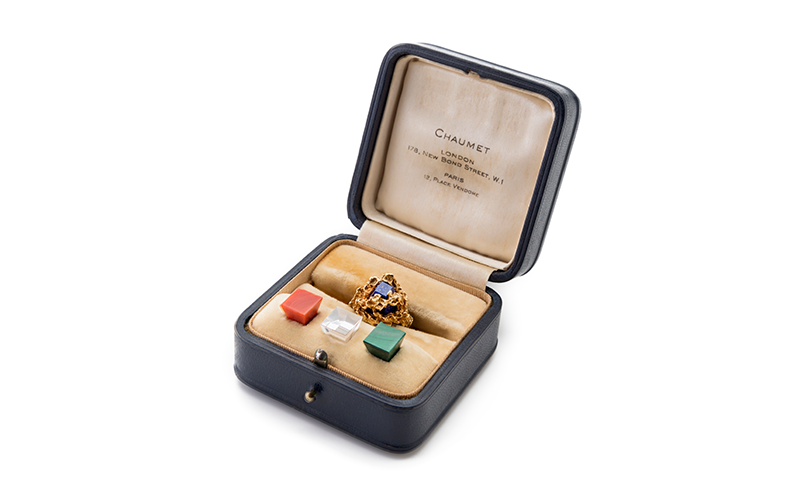 Ring with Interchangeable Stones by Chaumet
Ring with Interchangeable Stones by Chaumet
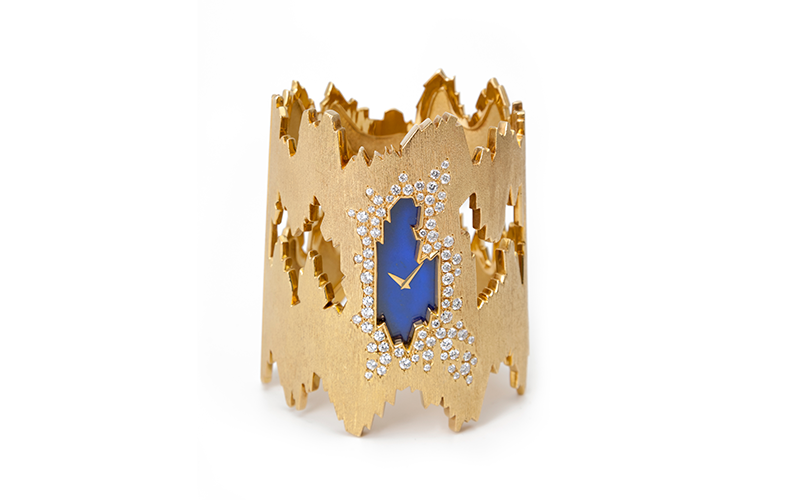 Alexandra Watch by Chopard
Alexandra Watch by Chopard
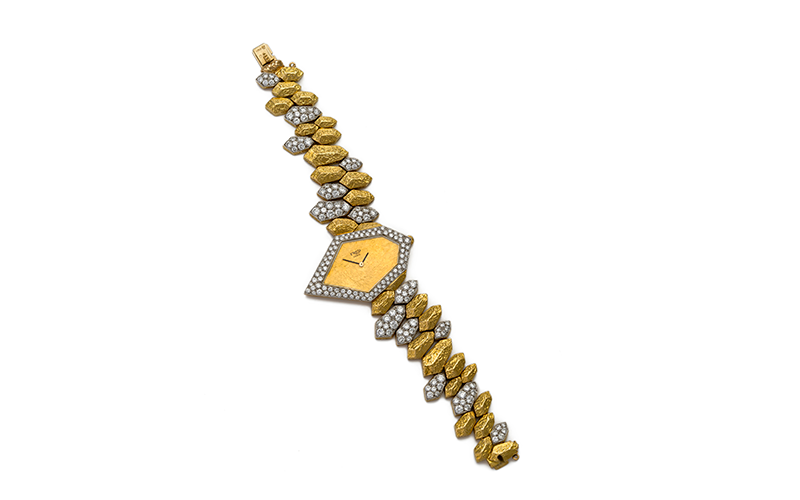 Watch by Gérald Genta
Watch by Gérald Genta
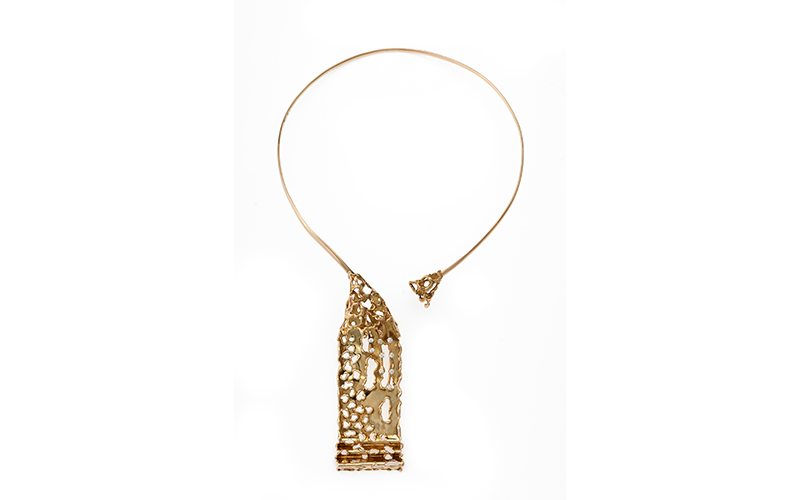 Necklace by Laurence Graff
Necklace by Laurence Graff
 Brooch by Gübelin
Brooch by Gübelin
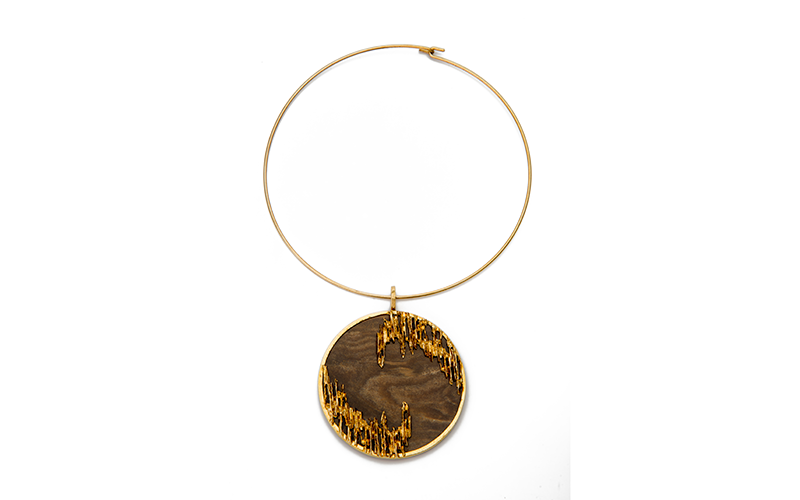 Pendant by Kutchinsky
Pendant by Kutchinsky
 Brooch and Earrings by Piaget
Brooch and Earrings by Piaget
 Avian Pendant/Brooch/Buckle by Van Cleef & Arpels
Avian Pendant/Brooch/Buckle by Van Cleef & Arpels
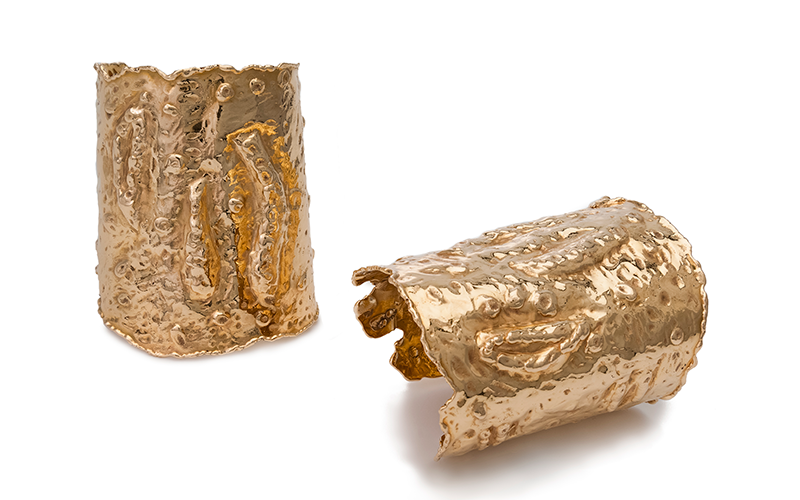 Manchette Cuff Bracelets by Van Cleef & Arpels
Manchette Cuff Bracelets by Van Cleef & Arpels
 Earrings by Wander & Company
Earrings by Wander & Company
 Necklace with Pendant by David Webb
Necklace with Pendant by David Webb
 Necklace with Pendant/Brooch and Ring by Haroldo Burle Marx
Necklace with Pendant/Brooch and Ring by Haroldo Burle Marx
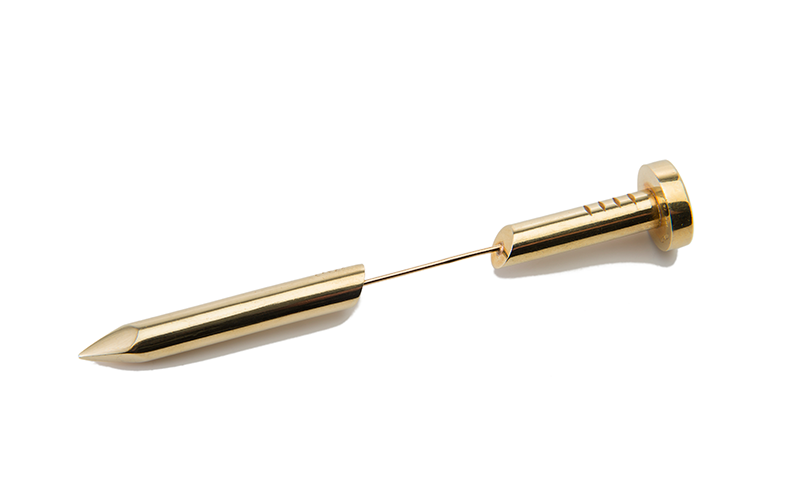 Juste un Clou Pin by Aldo Cipullo
Juste un Clou Pin by Aldo Cipullo
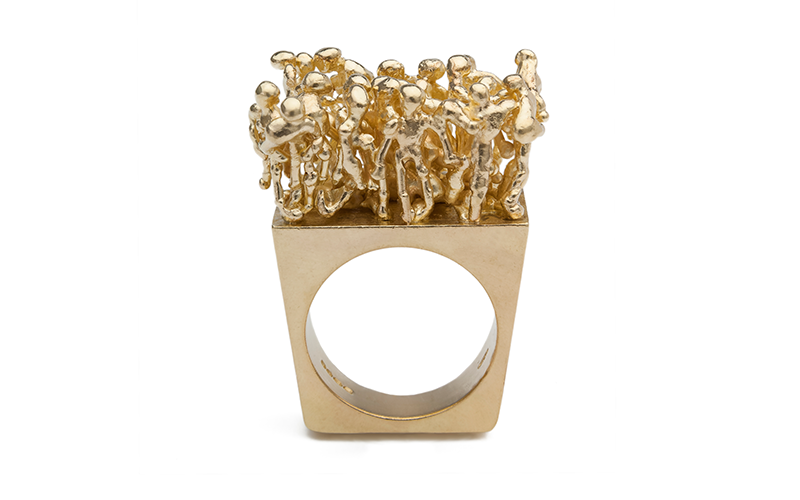 Ring by Stuart Devlin
Ring by Stuart Devlin
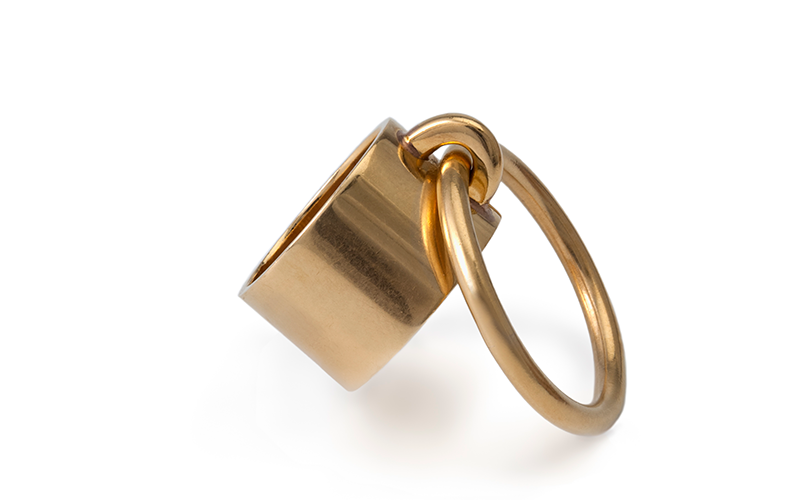 Slave Ring by Jean Dinh Van
Slave Ring by Jean Dinh Van
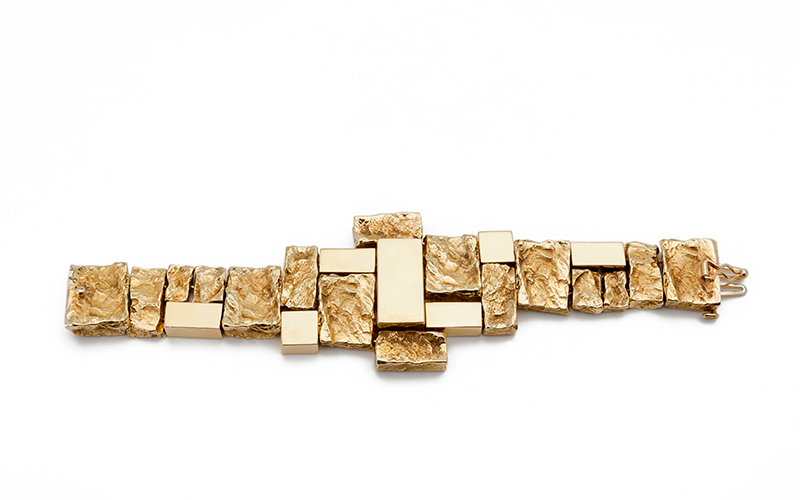 Bracelet by Alfred Karram
Bracelet by Alfred Karram
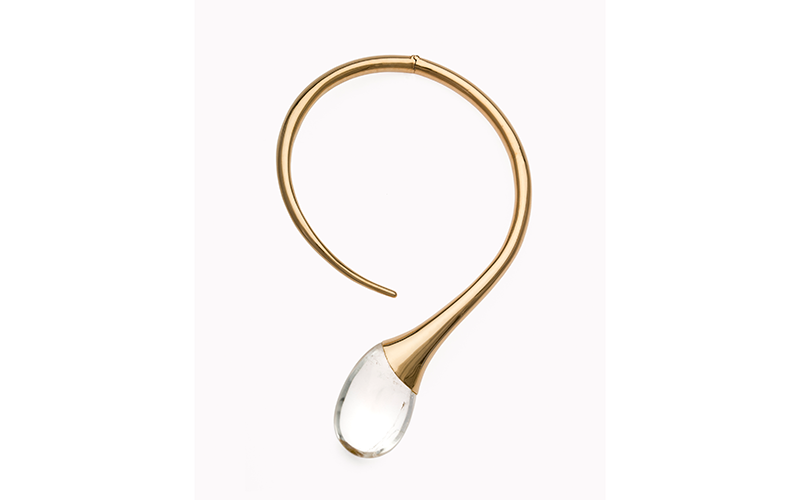 Necklace by Ilias Lalaounis
Necklace by Ilias Lalaounis
 Necklace with Pendant by Jean Mahie
Necklace with Pendant by Jean Mahie
 Bracelet by Walter Schluep
Bracelet by Walter Schluep
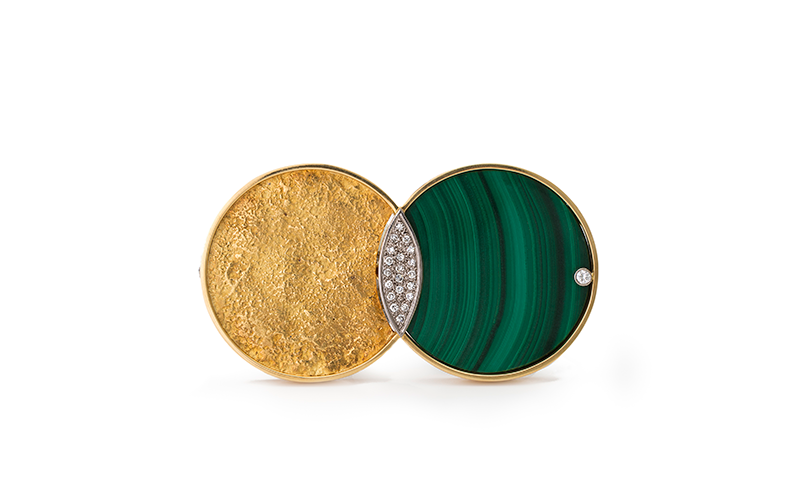 Brooch by Karl Stittgen
Brooch by Karl Stittgen




